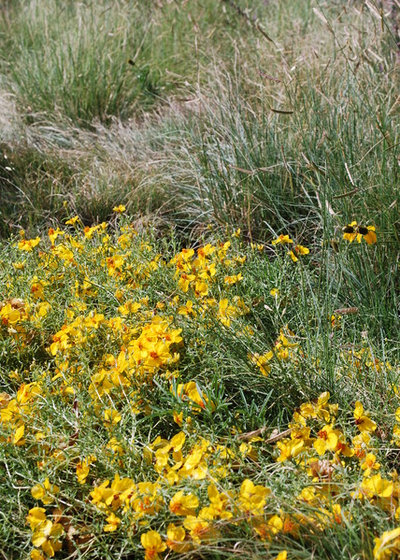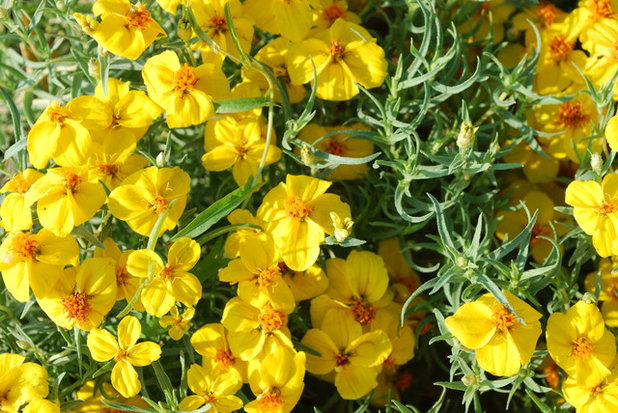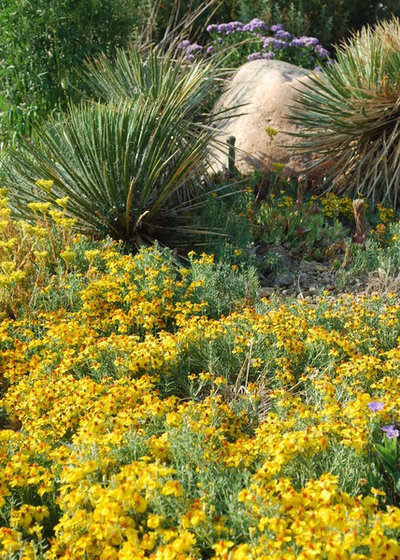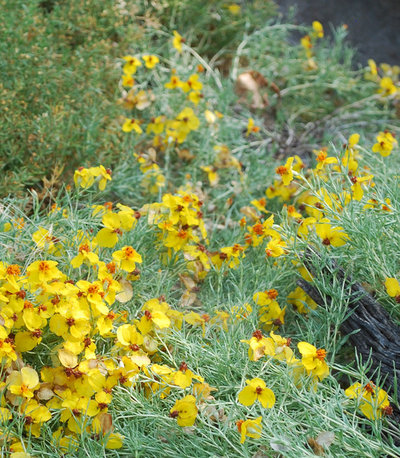If you're struggling with a hot and dry area that needs a big dose of color, Rocky Mountain zinnia can come to the rescue! This long-blooming perennial is a hardy native found on the dry slopes and mesas of the southwestern U.S., but is sorely underused in garden settings.

Jocelyn H. Chilvers
Botanical name: Zinnia grandifloraCommon names: Rocky Mountain zinnia, prairie zinnia, desert zinnia
Origin: Native to the southwestern United States, Mexico and Central America
Where it will grow: Hardy to -30 degrees (USDA climate zones 4 to 7; find your zone)
Elevation range: 4,000 to 6,000 feet
Water requirement: Very low
Light requirement: Full sun
Mature size: 6 to 8 inches tall and 10 to 15 inches wide
Benefits and tolerances: Very long blooming — June to frost; very drought and heat tolerant; deer and rabbit resistant
When to plant: Spring
Seasonal interest: Rocky Mountain zinnia flowers prolifically from June to frost (the photographs here were taken in early July and early September).

Jocelyn H. Chilvers

Jocelyn H. Chilvers
Distinguishing traits. The 1-inch-diameter flowers feature bright, golden-yellow petals and dark orange anthers. The foliage is fine, with needle-like leaves in a cool blue-green hue.
How to use it. Plant Rocky Mountain zinnia as a showy drift of bright color in prairie gardens, xeriscape gardens and desert gardens. Combine it with drought-tolerant, short, native grasses, like blue gramma grass (
Bouteloua gracilis, USDA zones 3 to 10) and buffalo grass (
Bucheloe dactyloides,
zones 4 to 9), and wildflowers such as purple prairie clover (
Dalea purpureum, zones 3 to 9), wild four o'clock (
Mirabilis multiflorus, zones 4 to 8) and orange butterfly weed (
Asclepias tuberosa, zones 4 to 9).
A high drought tolerance and fine foliage texture also make Rocky Mountain zinnia an ideal foil for rugged plants like
Yucca spp (as shown here),
Hesperaloe spp,
Agave spp and cacti.

Jocelyn H. Chilvers
Planting notes. Rocky Mountain zinnia demands well-drained soil — either sand or amended clay — and a sunny site. Water young plants to establish the root system, then reduce or eliminate water altogether. (Mature plants will survive with 6 to 8 inches of water per year.)
The plant will slowly spread via rhizomes (specialized underground stems) to form a massing ground cover. It may also spread by seed; deadhead the flowers at the end of the growing season to control spreading if necessary.
Note that the plants are very late to break dormancy and won't show in the garden until the soil warms up in late spring or early summer.





